Diné College, Colorado Canyons Association and the BLM take Diné youth down the Gunnison River.
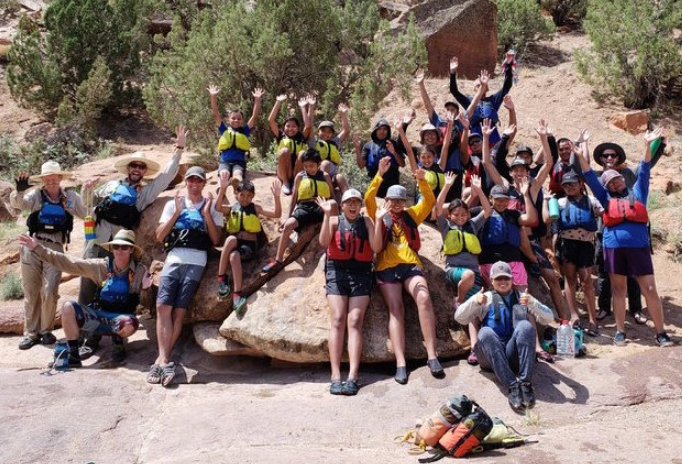
Adventures in Education
Every summer, Colorado Canyons Association (CCA) and the Bureau of Land Management (BLM) host overnight rafting trips for the Chuska Environmental Youth Camp run by Diné College. The trips explore the Gunnison River as it cuts through the stunning Dominguez-Escalante Canyon.
“It’s an opportunity to travel through one of the most beautiful places in Colorado,” says Killian Rush, CCA’s Development Director. “The two-day curriculum improves the students’ understanding of river safety and their confidence to deal with challenges,” says Rush. “It also enhances their understanding of river systems and of environmental science practices.”
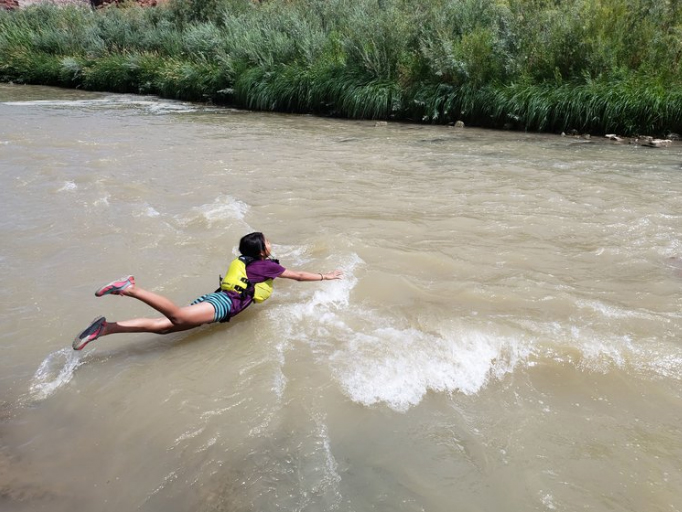
River Safety
During the day, students navigate paddle rafts and duckies, practice river rescue, and learn safe swimming techniques. At night, they sleep at Big Dominguez Campground. “They just have so much fun,” Rush says of the kids. Some are pretty timid about swimming in moving water. “Seeing them work hard to overcome those fears is pretty remarkable,” says Rush.
(Note: The kids wear life jackets at all times when in and on moving water. You should too!)
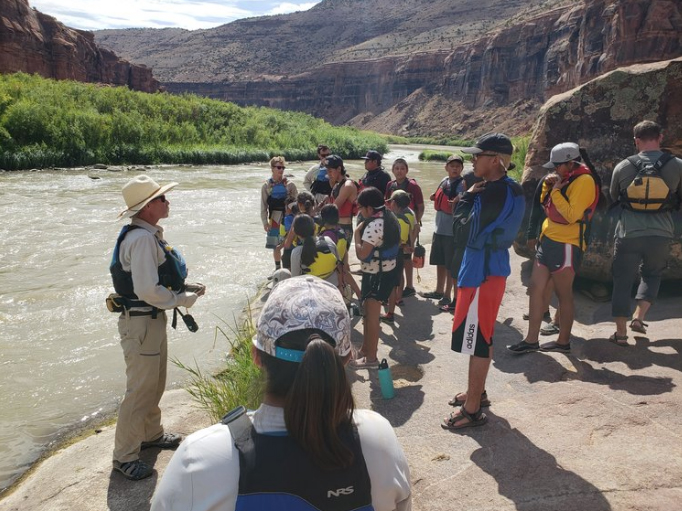
River Ecology
While gaining practical river safety skills, students also learn about the ecosystems they are traveling through. The curriculum touches on science, technology, engineering, and math. Instructors use hands-on methods to keep the kids engaged and to stay grounded in real-world examples.
They talk about how important healthy rivers and clean water are to community health in the southwest. They also discuss the role of native and invasive species in the ecosystem. The lessons sink in quickly. “It’s fun to see them develop a sense of place,” says Rush of the students. “You can see that the kids respect these areas.”
The classes also cover the BLM’s science-based management tactics and possible career pathways. The students walk away from the weekend with a map leading to outdoor careers. Many are excited by the idea of working to protect places like Dominguez-Escalante.
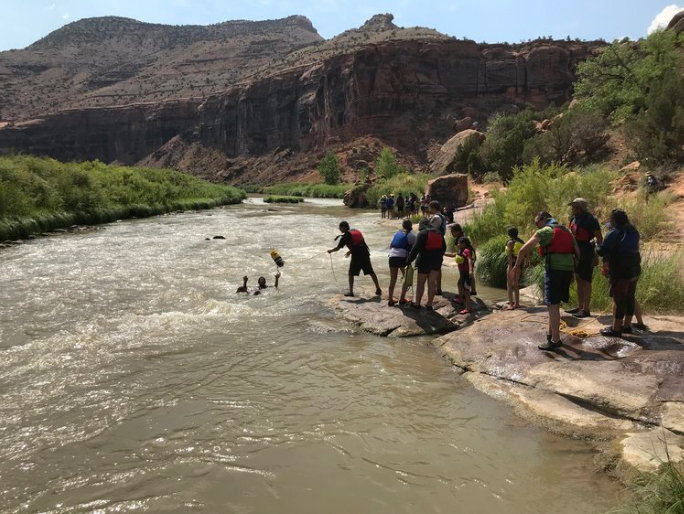
Forging Connections and Growing Leaders
Participates range in age from 9 to 15 and are accompanied by student youth leaders from Diné College. This mentorship means a lot to the younger kids. It also helps the collegiate scholars develop and polish their leadership skills. According to Rush, the structure builds a lot of trust and creates connections.
Every night the group forms a talk circle, and the youth leaders pose a question for all to consider. The students answer the question one at a time, reflecting on their experiences, thoughts, and feelings. During the talk circle last year, a number of the kids expressed interest in land management and river stewardship careers. That was gratifying for the CCA and BLM leaders, who made that decision themselves.
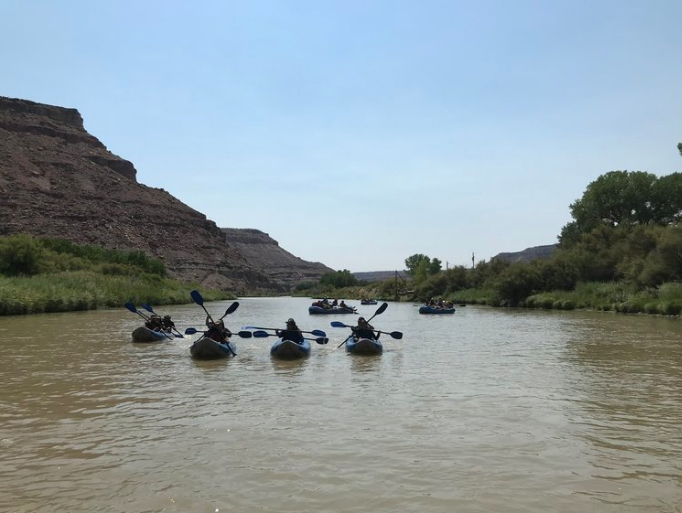
Room To Grow
“With funding from Forever Our Rivers and support from other partners, CCA gets these kids outside and helps them develop an understanding of outdoor careers,” says Rush. “It’s a really powerful program.”
CCA is looking for more funding to expand it. Last year, the program accepted 43 kids. They’d like to grow that number to over 50 and add a classroom-based lesson before each river trip. This will prepare participants for the safety, learning and planning aspects of the trip.
CCA is also working with the Ute Mountain Ute and Southern Ute Tribes to get students out onto their ancestral lands and rivers. They are developing an environmental education curriculum to complement the planned river and overland adventures.
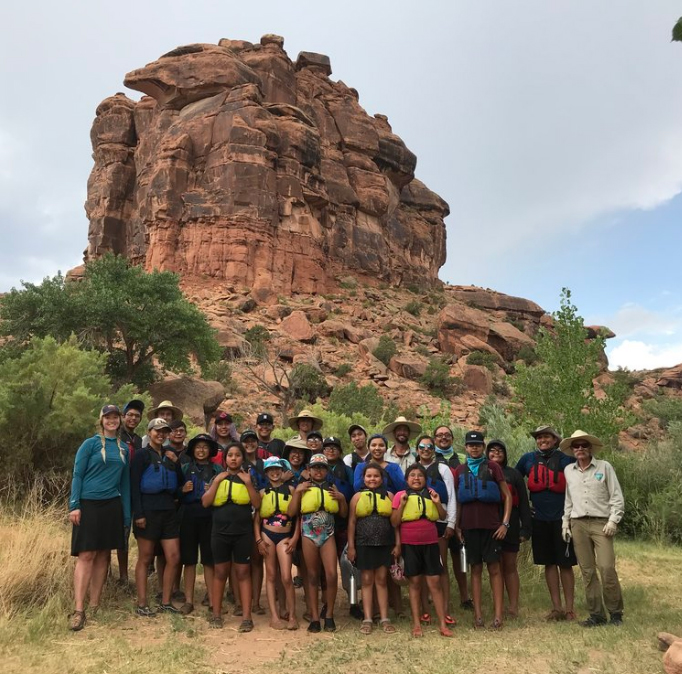
Brief Histories
While Diné College’s main campus is in Tsaile (Tsééhílí), Arizona, it serves the entire Navajo Nation with five branch campuses, three in Arizona and two in New Mexico. Established in 1968, it was the first college established by and for Native Americans. (There are now 33 similar tribally controlled colleges.)
There are three National Conservation Areas (NCA) in Colorado — Dominguez-Escalante, Gunnison Gorge, and McInnis Canyons. NCA’s protect natural areas of outstanding ecological, scientific, cultural, historic, or wilderness and recreational value. The BLM is in charge of protecting those values. The Colorado Canyons Association (CCA) helps the community engage with these landscapes.
